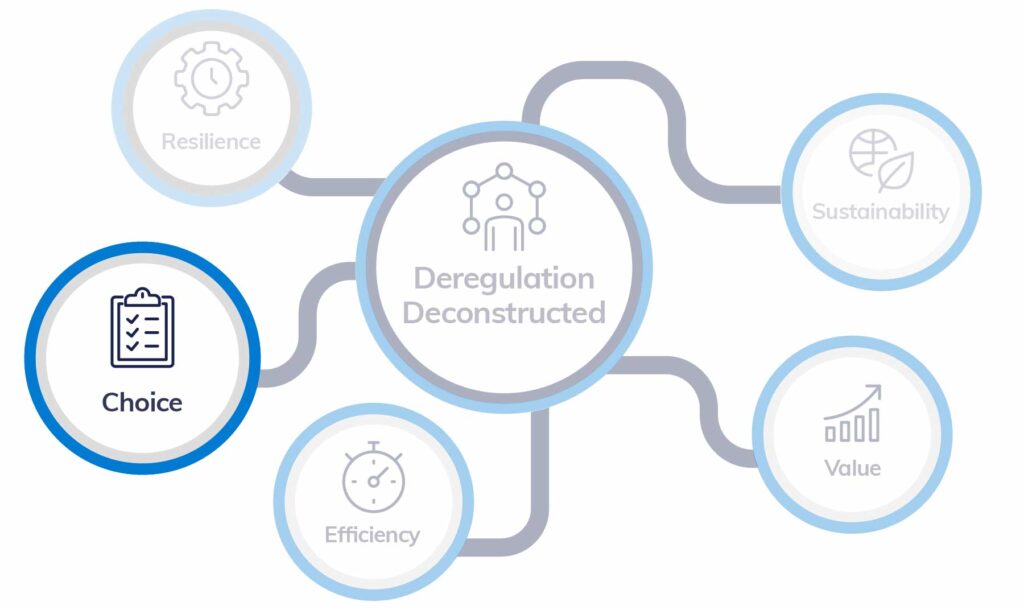The deregulation of the water industry in 2017 set out to accomplish a lot.
Five years on, to what extent has it delivered on customer choice and empowerment?

Progress
Given the complexity of long-established market structures, the mere fact that the market managed to transition from geographically defined retail monopolies to a nationwide competitive landscape on schedule in April 2017, was in itself a major step forward for UK businesses.
Market deregulation gave customers choice over who supplies their water, at what cost, and with which added value options. With this choice came an inherent expectation that competition would boost customer service levels, reward the service providers who offer best value and innovate to solve customer challenges, and drive out of the market those who do not.
“The tender process we are currently involved with should deliver savings to the English sites, amalgamate all supply with one company and, hopefully, improve the customer service received”
Deregulation also gave customers the opportunity to deal directly with wholesalers for optimum control and efficiency gains in the form of Self-Supply. This approach to the market has consistently been heralded as the single most innovative approach to delivering customer choice in the market. More than that, businesses taking this path to water efficiency fill the gaps in the market’s understanding of customer needs and go onto help shape it in a way that works for all commercial water customers, through participation in the Self-Supply Users Forum.
While incumbent retailers continue to account for the large majority of market share (at 93% of both consumption and supply points) new entrants to the market are slowly emerging.
Customer choice in the market is slowly improving

Source: Ofwat State of the Market Report 2021-22
Roadblocks
Overall, it’s fair to say that real change has been slow to occur, largely hindered by low market awareness, a cumbersome supplier switching process, poor market data, frictions between retailers and wholesalers, and few new entrants to the market.
“Competition has not been strong, particularly outside retailers’ original wholesale areas”*
“There is no customer choice still as wholesalers have monopolies and… retailer performance remains poor”*
Awareness of the opportunity that market deregulation presents has been lacking from the start and continues to be so. Only half of businesses are aware that they have a choice of retailer, according to Ofwat’s State of the Market Report 2021-22.
Indeed, for those big businesses that consume the most water, awareness of this opportunity has dropped significantly to the lowest level since the market began (57% now, compared to 96% in 2019-20). The same report also reveals that only 23% of larger businesses are acting on their opportunity to negotiate or switch suppliers – also down year on year.
For start-ups and early-stage businesses that began trading since 2017, water isn’t even on their radar: just 4% of these new businesses are active in the market. Little customer education on the real water pressures that affect their businesses is failing to give them a reason to engage with the market. While their individual environmental impacts may currently be small, their exposure to operational risks could be catastrophic if a water-related event prevents a business from trading for several days. Further, as these businesses grow, their environmental impacts and commercial risks will too.
For those businesses that do recognise the potential benefits of entering the market, the switching experience tends to be poor and cumbersome. In part, this is because no coded framework exists to capture a customer journey from the point of tender to completing transition between retailers.
Customer engagement in the water market remains low

Source: Ofwat State of the Market Report 2021-22
In the main, the water market lacks business-to-business focus and fails to be responsive to the specific needs of non-household customers.
“[the market] needs to be more dynamic and agile to be able to respond to issues/feedback quicker and generally evolve at a faster rate”*
Moving Forward
- All non-household water users need to know that engaging in the market is a means to achieving sound water stewardship. Therefore, a comprehensive market awareness drive, highlighting the need for water efficiency, should be implemented.
- Market services should be uniquely tailored to business customer needs and all opportunities for direct customer engagement should be acted upon to enable this.
- While choice inherently means shaking up the status quo, it should not disregard the need for consistent market processes and standards to streamline switching processes.
What are your priorities? Find out how the water market is performing on other measures:
*Direct customer quotes from survey conducted by Waterscan, May 2022




